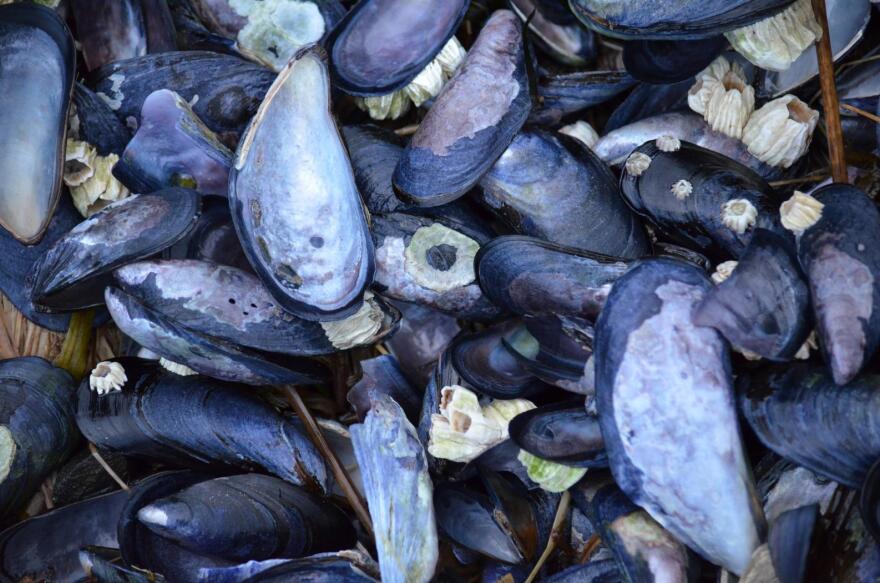High levels of the toxin that causes paralytic shellfish poisoning showed up in samples of shellfish last year from the Aleutian Islands, according to an analysis by the Knik Tribe.
The Southcentral Alaska tribe’s scientists looked at shellfish samples from Sand Point collected in 2023, and some showed levels of the biotoxin almost 50 times higher than the U.S. Food and Drug Administration’s recommended limit. The Knik Tribe’s analysis of samples from Juneau, Kodiak, King Cove and Chignik Lagoon also showed some had levels of PSP toxin higher than the FDA’s cutoff.
The shellfish samples included clams, mussels, crab and cockles.
The toxin comes from algae and can collect in shellfish and the fish that eat them. If humans eat shellfish with high levels of the toxin, they can get sick. At its worst, PSP can cause partial or full paralysis and lead to death.
Though its traditional territory is not near abundant shellfish, the Knik Tribe tests samples that Alaskans send in from all over the state through its grant-funded program.
Not all of the state is at the same risk for PSP, said Bruce Wright, the Knik Tribe’s chief scientist. I’s especially a concern in places with relatively warmer water, he said.
“Right now the area that seems to be most affected is from Juneau to Unalaska,” Wright said. “Further out the Aleutians, the levels seem to be pretty low. It's a different oceanography out there. Water temperatures are usually colder out there. And then up north, we're starting to see more PSP activity.”
The tribe is working with public health officials in Nome to measure toxin levels in crabs, as well, Wright said.
Commercial fisheries also test shellfish for the toxin, he said, but there’s always some risk if people eat a subsistence harvest of shellfish.
“The best we can do is, you go out and you collect your clams, take them out of the ocean, throw them in the refrigerator or the freezer and contact us at Knik Tribe and get us a sample, and we'll test them,” Wright said. “And then we'll tell you what we think the risk factor is of eating that harvest.”
It’s important to test individual harvests, and the tribe does that for free for Alaskans, Wright said. Shellfish harvests even a quarter-mile away from each other might have very different levels of the PSP toxin, he said. And, Wright said, even if you see people eating shellfish from a beach, that doesn’t mean it’s safe.
“There's a lot of wives' tales out there that people use, one being that if you eat clams during the months with an R in them, because those are the colder months, that the clams will be safe to eat,” he said. “But that's not the case. And that's especially not true with butter clams. Once butter claims become toxic, they can maintain their toxicity for well over a year.”
Alaskans who want to test their subsistence harvests of shellfish can contact the Knik Tribe. You can also request data from the tribe about the harvests already tested.


